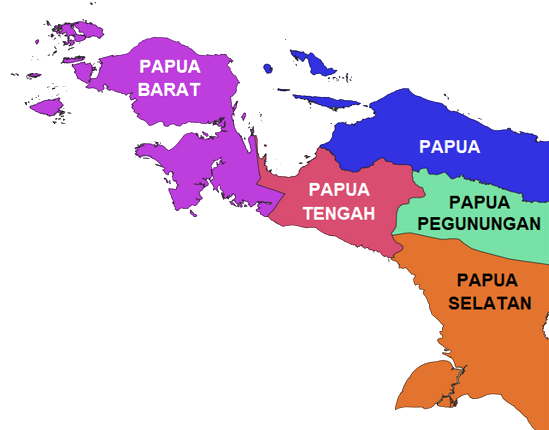Papua New Guinea as a Golden Momentum for Regional Arrangement
The existence of 4 new autonomous regions (DOB) in Papua is a golden momentum to organize these regions for the better. With the existence of a new province, the arrangement is easier because the territory is narrower. Administrative and bureaucratic arrangements in Papua are also being carried out to perfect the functions of the new province, so that services to the community are better.
Regional division, aka the addition of a new autonomous region, has been realized in Papua. The four new autonomous regions are the Provinces of Southwest Papua, Central Papua, South Papua and Highlands Papua. The existence of 4 new autonomous regions was a request from the Papuan people who several years ago had an audience with President Jokowi, and in 2022 their request was granted.
The four new autonomous regions are a golden momentum to rearrange the Papua region. now the wheel of government is already running. The claim is based on four indicators made by the Ministry of Home Affairs. The Director General of Regional Autonomy (Otda) of the Ministry of Home Affairs, Akmal Malik, said that the four indicators indicate that the wheels of government in the four DOBs are already running.
First, 22 clusters of regional apparatus organizations have been formed in each new autonomous region. This number of regional apparatus is the minimum requirement for a new province to be able to carry out all government affairs.
The four new autonomous regions have been established and their administration is running. There are already acting (acting) governors in each province, namely Ribka Haluk (acting Governor of Central Papua), Apolo S (acting Governor of South Papua), Nikolaus K (acting Governor of Mountain Papua). Then, for the Southwest Papua Province, it will be led by Acting Governor Ridwan Ruusukun.
Then, the state civil apparatus (ASN) in 4 new autonomous regions are still in a transition period. Akmal Malik continued, the process of filling in employees is still ongoing through ASN mutations and open selection of officials. This process certainly takes time and the public is expected to be patient in waiting, so that administrative services will get better.
The central government promises that 80 percent of the total ASN needs in the four new autonomous regions will be filled by indigenous Papuans (OAP). Based on Ministry of Home Affairs records, each new province must have 22 OPDs. Meanwhile, to mobilize a total of 66 OPDs, at least 3,159 ASNs are needed in each province.
The ASN post filled by the OAP is an application of the Special Autonomy Law (Otsus). According to this law, OAP is prioritized to be appointed as civil servants. Then, the governor and deputy are also required to be from OAP. Later, if the acting governor is replaced by a new governor (after direct regional head elections), he will also be OAP.
The existing officials and employees in the four provinces work to organize the government using the facilities and infrastructure belonging to the government of the parent province and the regency which will become the capital of the new province. The various facilities are temporarily loaned until the four new autonomous regions have their own facilities.
Infrastructure such as the offices for the four new autonomous regions are currently still in the process of preparing land, master plans and budgeting from the relevant ministries or agencies. “Funding can come from the APBN and APBD, with the target of building government infrastructure starting in 2023.
The DOB in Papua has determined the APBD through a governor’s regulation. Meanwhile the filling in of members of the Papuan People’s Council (MRP), an official state institution for the cultural representation of indigenous Papuans (OAP), in all the new provinces has entered its final stage.
Meanwhile, Papuan community leader Alberth Yoku stated that he supports the reorganization of the Papua region. With the existence of 4 new autonomous regions, it is hoped that Papua will get better and better organized.
Regional management is an inherent tool in the effort to achieve social welfare as the main goal of regional autonomy. The Regional Government Law states explicitly that regional planning is a way to realize the effectiveness of government administration, accelerating improvements in the quality of public services.
Then, structuring the Papua region also improves the quality of government governance, increases national and regional competitiveness, and maintains locality (customs, culture).
Regional expansion is a way for people’s welfare, service effectiveness, and development equity. With the addition of the new autonomous regions, it is hoped that Papua will get better.
The government really paid attention to the Papuan people and finally made regional expansion. The formation of 4 new provinces is the request of the people of Bumi Cendrawasih. After this DOB was officially established, the people were very happy because the government was on their side. Especially when Papua’s territory is too large (almost 40,000 m2) so it needs new provinces to make it easier to regulate.
With the inauguration of the 4 new autonomous regions, there will be an even distribution of development. Development in Papua really needs to be increased so that it is evenly distributed. So, not only big cities like Jayapura or Merauke have good infrastructure. But also other areas such as Nabire, Yahukimo, Intan Jaya, Mimika, etc.
The new autonomous region is a golden momentum to rearrange the Papua region for the better. With the existence of 4 new autonomous regions, structuring the Papua region will be easier, because the area per province will be narrower, making development and administrative arrangements easier. The Papuan people are happy because their area is more advanced thanks to regional expansion.
